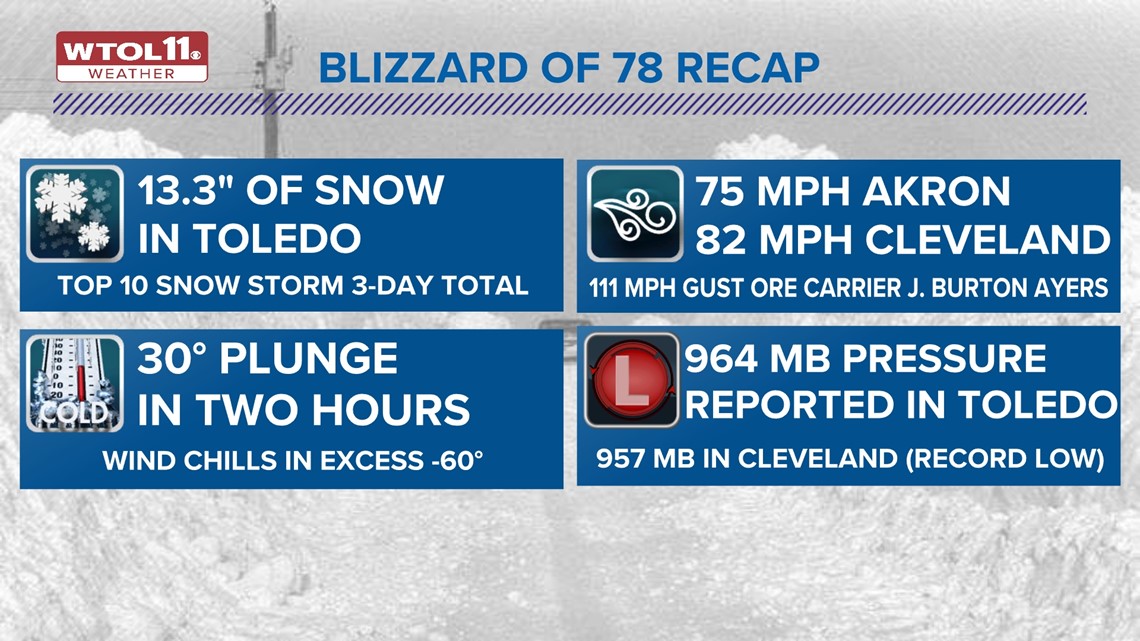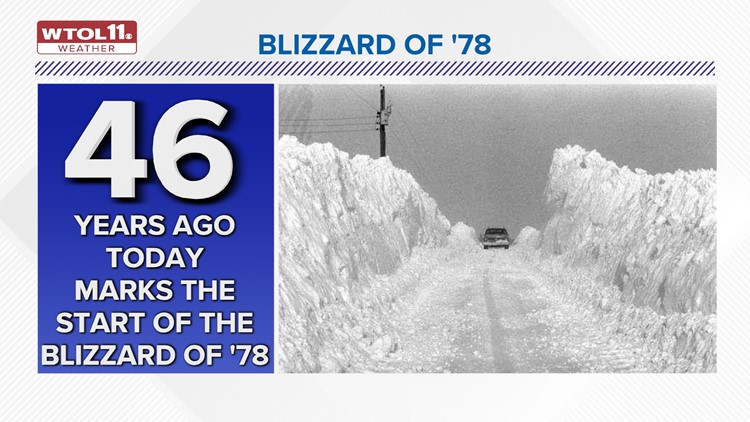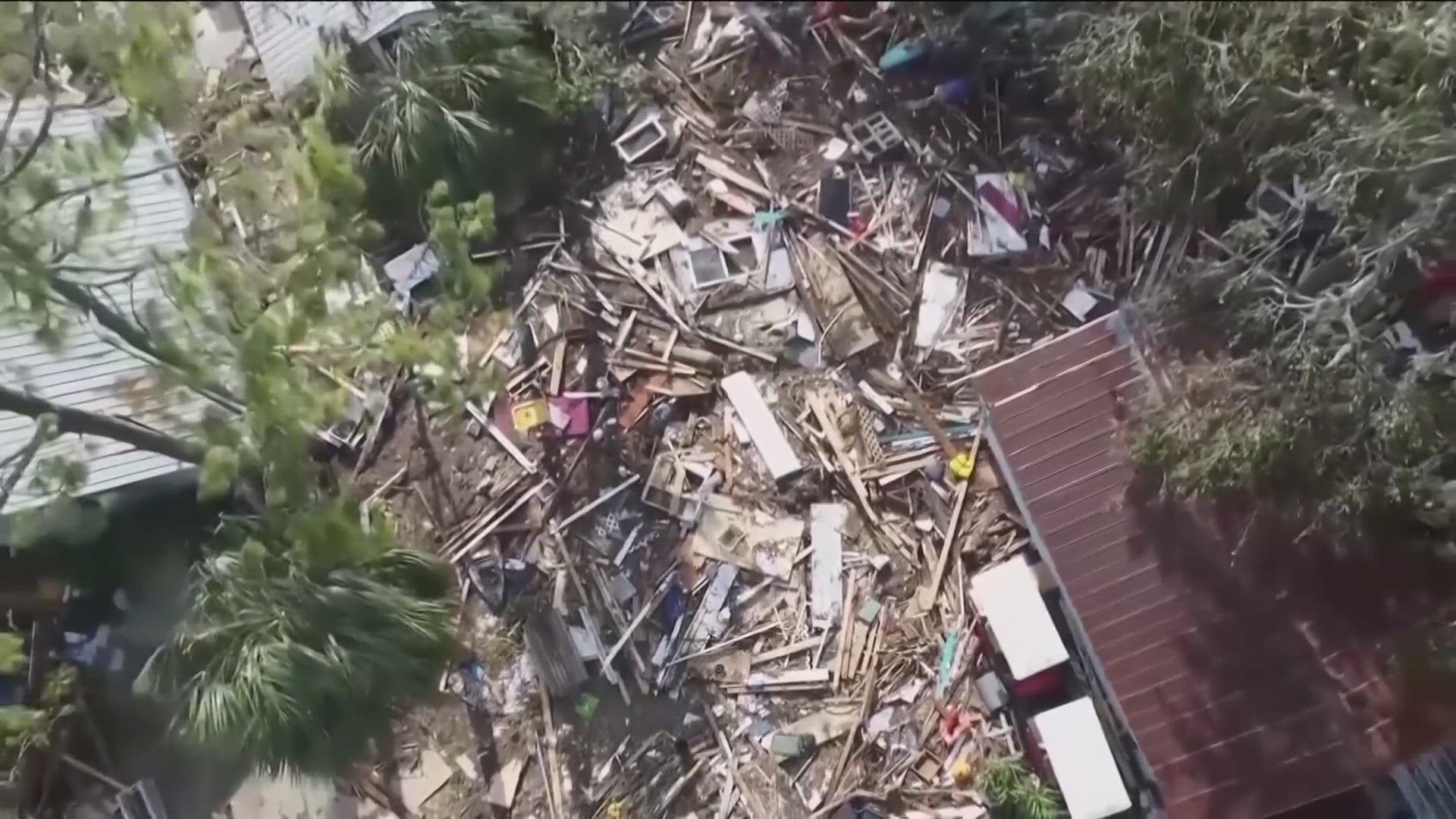TOLEDO, Ohio — The worst winter storm in Ohio history struck before dawn on Thursday, Jan. 26, 1978.
With little advanced warning, The Blizzard of ’78 ferociously hammered northwest Ohio on Thursday and into Friday. Transportation, business, industry and schools were closed statewide for two days, with the normal pace of society not returning to the area for five days.
As the blizzard arrived, temperatures plunged by over 30 degrees in just hours. Heavy snow was followed by extreme winds. Winds increased with gusts of 50-80 mph with isolated gusts over 100 mph near Lake Erie. In fact, winds sustained to 86 mph with a gust to 111 mph on Lake Erie was reported by the ore carrier J. Burton Ayers.


The blizzard raged into the night of Jan. 26 and the barometric pressure, a common measure of storm strength, reached historic levels. Toledo reported its lowest barometric pressure on record at 964 mb. The barometric pressure reading in Cleveland plummeted to 957 mb and remains the record for the lowest barometric pressure reading in the state of Ohio.
Meteorologists generally follow the guidance that the lower the barometric pressure, the stronger the storm is likely to be. Rapid drops in barometric pressure also cause the winds within a storm to intensify.
All totaled, over 13 inches of snow was reported with paralyzing snow drifts over 15 feet high. This stranded thousands of people and left tens of thousands without power in the extreme cold. I-75 was closed for three days and a portion of I-475 was closed for six days. The entire length of the Ohio Turnpike was closed for the first time in its history.


The death toll of 51 reported made this one of the deadliest winter storms known in Ohio.
The Ohio National Guard was called into active duty with over 5,000 personnel to assist in rescue and recovery. Agricultural losses in Ohio totaled $73 million.
President Jimmy Carter declared a federal disaster in Ohio on the evening of Jan. 26 and dispatched 300 federal troops of the 27th Engineer Battalion, 18th Airborne Corps, based at Fort Bragg, N.C. The federal troops were air-lifted to Toledo Express Airport Sunday morning with arctic gear and 60 pieces of heavy equipment, including front-end loaders, bulldozers, personnel carriers and fuel tankers, to clear roads and rescue people in northwest Ohio.





